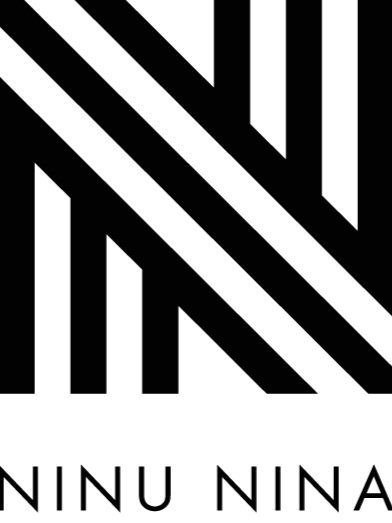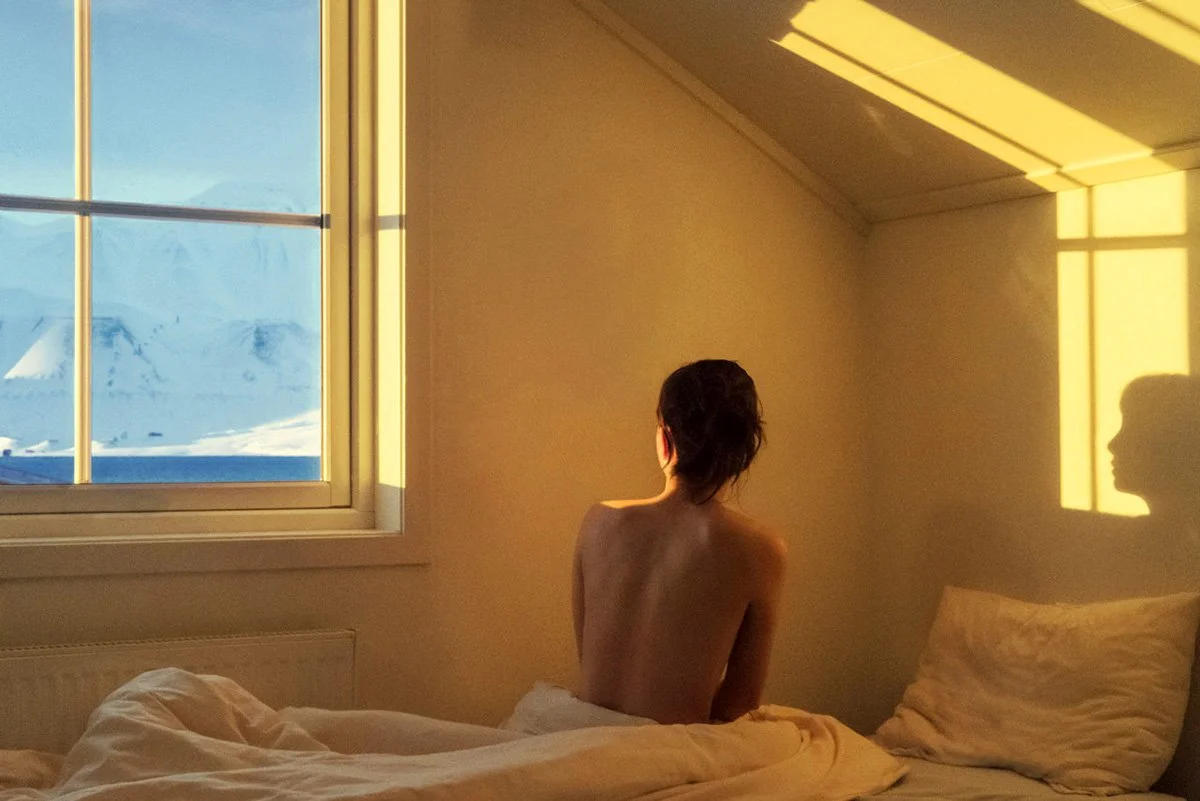JOHN MATTHIAS & JAY AUBORN
Ghost Notes, boldly explores human-robotic collaboration through mini electronic symphonies.
Utilizing his expertise and interests in science and sound, composer, violinist and physicist, John Matthias is known for blending tradition and futurism in his music, leading to four acclaimed albums and collaborations including Radiohead, Matthew Herbert and Coldcut. Jay Auborn’s assiduous work in musical engineering, which takes sound as yet another malleable material to be played with, has made him into a sought-after musician, producer and sound artist working on everything from large-scale sound installations to film scores.
Their album Ghost Notes continues to be driven by this force – for the album, John Matthias and Jay Auborn gave their computer limbs and unleashed its agency, improvising alongside this new band member to create mini electronic symphonies. The duo used solenoid magnets to convert audio signals sent from their computer into voltages that could fire hammers that would in turn hit a real drum kit. We are very excited to learn more about their process and inspirations today.
What are your greatest inspirations or influences?
Jay: I got into sound and music making from a background in fine art, making a connection between visual collage and the audio sampler. That has influenced the way I think about making music, playing the materiality of sound, and how that texture for me is equal to time, rhythm and harmony as musical components. Discovering John Cage made me feel more at home within music, he has certainly influenced my relationship with music and what I believe to be its function. If John Cage taught me the why, it was chiefly the author Ernest Hemmingway who taught me the how. Hemingway novels are full of lessons on creative discipline, and I’ve found a lot of guidance in them. Looking back at albums that really shifted my outlook I think Radiohead's Kid A was a massive deal for me, I was fed up with playing in bands at the time it came out, the album introduced me to the idea that electronics and tech could be emotive, I found the album via its artwork by Stanley Donwood which lured me into their world. This led me to Autechre and from there Prefuse 73, hip hop and jazz. I like artists who don't look back and who keep moving forward and trying new things.
John: I have a very broad base of inspirations and influences and I work in many different areas of music from contemporary classical to songwriting, rock, experimental acoustic/ electronic music and sound art installation so it’s very difficult for me to pin-point specific influences and inspirations.
However -here is a list:
Miles Davis
John Coltrane
Radiohead
Pavement
Sibelius
JS Bach
Alice Coltrane
David Byrne
Yuval Harrari
Bob Dylan
Richard Feynman
Albert Einstein
Erik Satie
Steve Reich
The Smiths
Fugazi
How did you commence collaborating together?
John: Jay was asked with another producer, Simon Honywill several years ago to Master an album called ‘What Happens’ l which I made with Adrian Corker and Andrew Prior -only a very small release was made and we performed it at a brilliant event called The Ecstatic Music Festival in New York in 2012, but Jay was struck by the way in which that music used acoustic material with digital manipulation.
Jay and Simon then produced my ‘Geisterfahrer’ album and Jay and I decided that we wanted to make an album together, collaborating as co-artists, which resulted in our ‘Race to Zero’ album from 2017. We have very complementary ways of thinking about and making music -in general, Jay is very textural and I am very harmonic, but we swap over too!
Please could you elaborate on the album artwork?
John: The cover has been made by Stanley Donwood with whom we recently collaborated on the film, ‘Broadmead: The Movie’ (along with Mat Consume) which is about the idea of a Political Nostalgia for a post-war time when we were building new Schools, Hospitals, Universities and Towns in the UK for everyone, owned by everyone, instead of creating a private society for people with money.
This image, which is called ‘Dark Hedges’ is made from an original pencil drawing, also by Donwood of The Dark Hedges which is an avenue of beech trees along Bregagh Road between Armoy and Stranocum in County Antrim, Northern Ireland. Stanley Donwood made the final artwork using a Copper Verdigris process which involves a chemical decay -hence all the green oxidation in the image.
We see this decay in the image as a metaphor for some of the destruction of the digital sonic material in our album which occurs throughout the record.
A print of the original pencil drawing is available as an insert in the vinyl record which is being sold exclusively by the Dinked Network in the UK (this is a network of around 25 independent record shops who periodically release special editions of albums in their ‘Dinked Editions). On the reverse of the pencil drawing print is a QR code which will reveal an animation made by Chris Price at Zubr and Jay, which flicks through the 100 AI images made by Mike Phillips which are on the inside cover with 100 clips of the music from the album.
Mike Phillips has made these images by using a Generative Algorithmic Network or GAN to compare the front cover image with the pencil drawing, selecting the strangest and most beautiful results from the AI. They are strange and beautiful, FROM HERE and weirdly mirror the algorhythmic sensibilities of the album tracks. The GAN feeds on the original image, breeding it with a database populated with thousands of harvested images. Through a visual conversation between the AI and Phillips, tweaks and nudges evolve the spawned images. Forks and branches were brutally culled to nurture the slow evolution of punctuated equilibria and sudden spurts of morphological cladogenesis. One hundred survived.
Where do you see the future of art and technology going?
Jay: I think with every new technology people find ways to express themselves with it, and it's often the errors and byproducts of tech tools that create the most interesting art. I once read Bjork say something about how it's the role of artists to keep the humanity alive in technological advances. John and I have been working with an A.I system recently creating an emotionally adaptive score to a video game called Kraken Wakes based on the 1950s John Wyndam novel. We’ve considered the system a new format to explore working with its parameters which has informed our writing process for the project. It's perhaps not that different to music being shaped by other formats like the length of a CD or a rooms acoustics. A.I created art and music has really stepped up recently and there’s no denying its impressive ability to co-create. It’s the glitches in this process that interest me, what the unexpected happy accidents will be. I think that as A.I art becomes more omnipresent and surpasses our own technical abilities we will naturally think more about reasons to make art, and why that's important to us.
John: The history of ideas is to me a history of evolving contexts which include economic and technical contexts. At present, there seem to be some really important and challenging economic contexts which I believe will be the significant factors. They often get left out when music and other arts are being discussed but essentially if no one is getting paid, then it's a hobby. So what will dictate the future will be these economic factors in my opinion.
Please could you share your creative process on this album? How did you arrive at the concept of the ghost drummer and what was your set-up for producing this?
Ghost Notes started as a kind of live album experiment. We wanted to bring the electronic and acoustic elements of our music together in one space and in one process. To help us, we gave our computer limbs so it could play acoustic drums and percussion alongside us, becoming a trio of sorts.
Ahead of the first experiments with the computer-controlled drum kit we asked ourselves "If we could have any drummer in our band dead or alive who would it be? Max Roach came up, the American Jazz drummer, who worked with Charlie Parker in the 1940s. On All Hallow's Eve pre-lockdown, we fed a recording of a drum solo by Max Roach into the computer controlling the robot drummer. In turn, the drums came alive, reperforming his drum solo with haunting accuracy, as if Max was in the room with us. There was a sense of time collapsing through technology as Max hit a drum in the 50s which made its way through time and tech to be in the room with us.
After the initial experiment, we spent a week together recording in an old barn on the edge of Dartmoor in Devon. The robotic drummer would sometimes glitch out and play unexpected rhythms. We embraced these errors and they became an exciting outside influence on our music as if the machine had its own agency; John Cage’s ghost in the machine. The resulting recording session became this album, a collection of human-robotic collaboration through mini electronic symphonies.
The set-up is fairly crude, we are using pre-existing tools in a mashup which make the whole thing purposefully idiosyncratic. In one example one of us would play an acoustic drum kit which real-time converted to midi control signals via the computer then converted into voltages which field our electronic magnetic drum hammers on a second acoustic drum kit. The latency/time delay in the process would create an echo or delay as the 2nd drum kit mirrored what we played on the first, a kind of shadow of ourselves.
Where do you view your project within a contemporary music context?
Jay: I don’t think we think much about it in that way when making the music. We enjoy the process of creating intuitively and will typically use a concept as a framework to have something to butt up against as a kind of limitation to work within. Having now made this album and speaking to people you hear about how other people have worked with similar ideas and/or tech, which is great to check out how their projects turned out so differently. We enjoy making albums, which seem to be increasingly less popular as an audience experience for music. Our tracks don’t concern themselves with being one genre or another and we don’t worry about lengths of time, but at the same time we aren't trying to make difficult music or be hedonistic, we hope people can enjoy the music and get lost in the mini world we make around the music.
John: Contemporary Music is a very broad term. This music could probably be categorized as ‘progressive pop music’ for me, but genre-wise I think that this is a very difficult album to pin down. And also neither of us finds the idea of genre very useful or even interesting. I don't really care how it fits to the landscape except that if it doesn’t fit into the boundaries of how music is consumed, then I do understand that the album might become overlooked which I think would be a shame. There is an interesting tension in this.



